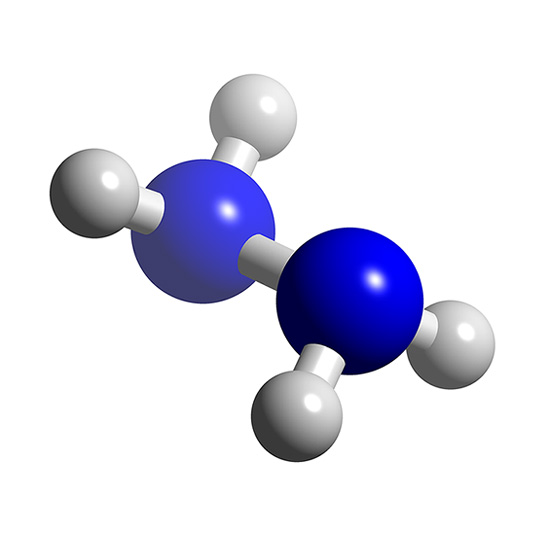In 6.72 g of #"N"_2"H"_4#, how many...?
(a) how many #"N"_2"H"_4# molecules are present?
(b) how many #"N"# atoms are present?
(c) how many protons are present
(a) how many
(b) how many
(c) how many protons are present
1 Answer
Here's what I got.
Explanation:
Your tool of choice for this problem will be Avogadro's number, which tells you how many molecules of a substance you get in one mole of that substance.
#color(blue)(|bar(ul(color(white)(a/a)"one mole" = 6.022 * 10^(23)"molecules"color(white)(a/a)|))) -># Avogadro's number
So, you know that one mole of hydrazine,
To figure that out, use hydrazine's molar mass, which tells you the mass of one mole of hydrazine molecules. Since hydrazine has a molar mass of
This means that your sample contains
#6.72color(red)(cancel(color(black)("g"))) * overbrace(("1 mole N"_2"H"_4)/(32.045color(red)(cancel(color(black)("g")))))^(color(brown)("molar mass of N"_2"H"_4)) = "0.2097 moles N"_2"H"_4#
Now that you how many moles you have, use Avogadro's number to find how many molecules you have
#0.2097color(red)(cancel(color(black)("moles"))) * overbrace((6.022 * 10^(23)"molecules")/(1color(red)(cancel(color(black)("mole")))))^(color(purple)("Avogadro's number")) = color(green)(|bar(ul(color(white)(a/a)1.26 * 10^(23)"molecules"color(white)(a/a)|)))#
Now, for part (b) you must find the number of nitrogen atoms,
- two atoms of nitrogen,
#2 xx "N"# - four atoms of hydrogen,
#4 xx "H"#

So, if you get
#1.26 * 10^(23)color(red)(cancel(color(black)("molecules N"_2"H"_4))) * "2 atoms of N"/(1color(red)(cancel(color(black)("molecule N"_2"H"_4)))) = color(green)(|bar(ul(color(white)(a/a)2.52 * 10^(23)"atoms of N"color(white)(a/a)|)))#
Finally, for part (c) you must find the total number of protons present in the sample. As you know, the number of protons present in the nucleus of a given atom is equal to that atom's atomic number.
A quick look in the periodic table will reveal that nitrogen has an atomic number equal to
Hydrogen has an atomic number equal to
Now, you already know how many atoms of nitrogen you have in the sample. Use the same approach to find the number of atoms of hydrogen
#1.26 * 10^(23)color(red)(cancel(color(black)("molecules N"_2"H"_4))) * "4 atoms of H"/(1color(red)(cancel(color(black)("molecule N"_2"H"_4)))) = 5.04 * 10^(23)"atoms of H"#
This means that the total number of protons present in the sample will be
#"no. of protons" = overbrace(7 xx 2.52 * 10^(23))^(color(blue)("coming from nitrogen")) + overbrace(1 xx 5.04 * 10^(23))^(color(red)("coming from hydrogen"))#
#"no. of protons" = color(green)(|bar(ul(color(white)(a/a)2.27 * 10^(24)"protons"color(white)(a/a)|)))#
The answers are rounded to three sig figs, the number of sig figs you have for the mass of hydrazine.

